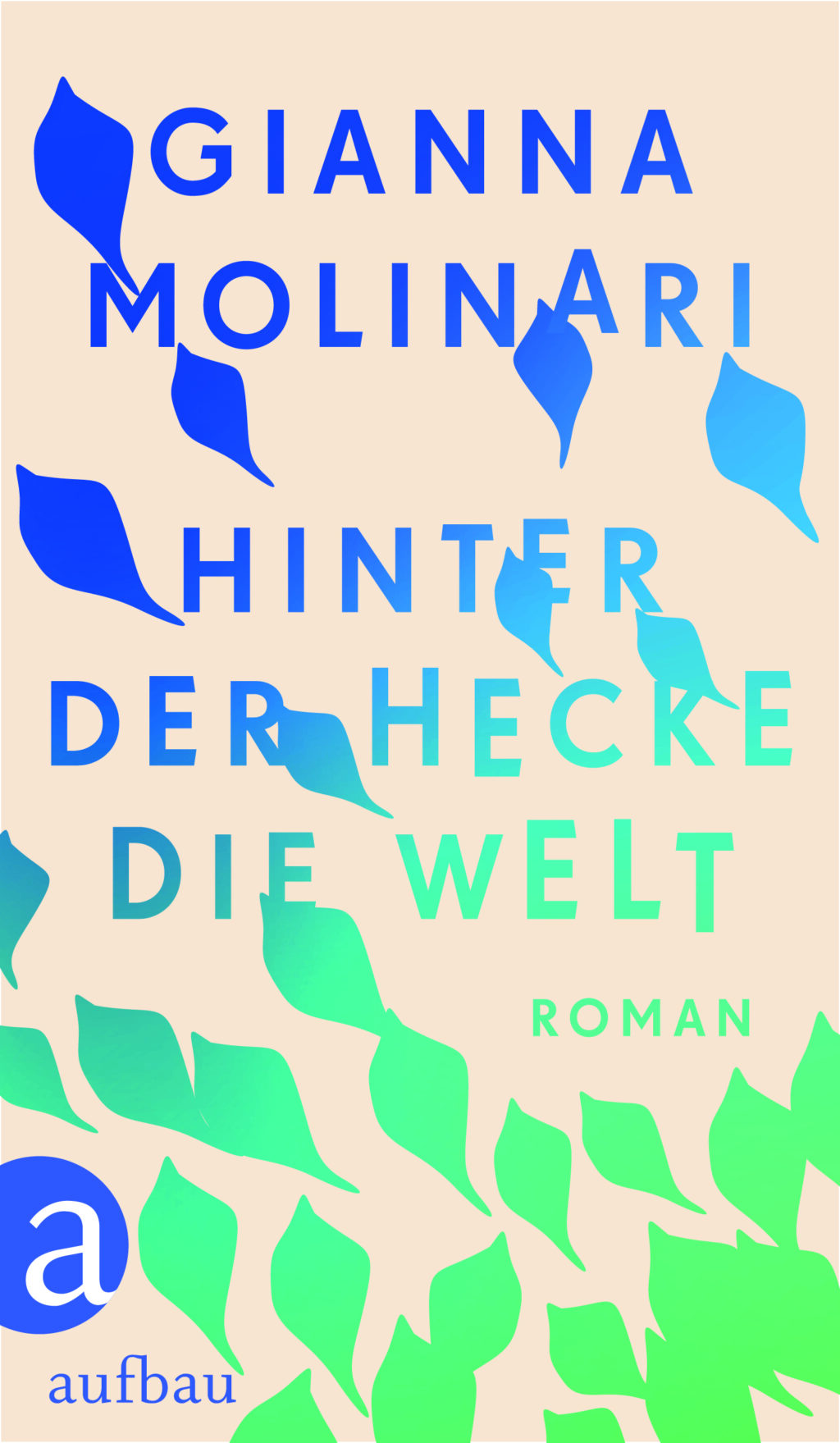Gianna Molinari’s second novel, The World Behind the Hedge, was selected for recommendation by New Books in German in Spring 2024. In an interview with Sarah Wolbach, Molinari speaks about her thought process behind writing the novel as well as her literary influences and future plans.
Thank you very much for taking the time to speak with me! I’m excited to chat with you about your process as a writer and especially about your latest novel, The World Behind the Hedge.
The pleasure is all mine. Thank you very much for your time and for reading my books.
I want to start by asking you about your journey as a writer. You studied literary writing at the Swiss Literature Institute in Biel and modern German literature at the University of Lausanne. Are there any works or periods you have studied which have been formative to your own writing process? Who are some of your literary inspirations, whether for style or subject matter?
There are perhaps not entire periods, but books and authors that have accompanied me in my writing. For example, Judith Schalansky, whom I find very interesting, both formally and in terms of content, but also regarding the question of what a book can be. I’m also inspired by W.G. Sebald, especially with regard to the question of the interplay between image and text, which is an important question for both of my books.
And then, of course, there was the exchange and dialogue with other writers and lecturers at the Swiss Literature Institute, which was very formative for my writing, right up to the present day.
The World Behind the Hedge features two distinct settings: a small village behind a hedge, and the Arctic, both of which face the threat of disappearing entirely. What drew you to each of these environments? Despite being poles apart, do you think they are similar in any way?

I was definitely interested in the vastness and size of the Arctic landscape on the one hand, and on the other, the spatial limitations of the village. In both narratives, a small group of people operate with the question of disappearance, the visible and the invisible, the missing. The landscape is also thematised in both narratives. In the Arctic, Dora is faced with a landscape that is completely alien to her, a landscape that is both threatening and threatened, because the climate change brought about by humans is dramatically altering the Arctic. And in the village, too, the natural environment is out of sorts; the hedge is growing wildly, it is overgrown and burgeoning — the village street, and with it, the whole village, is gradually being taken over by vegetation.
As mentioned, one of the themes of this book is disappearance, or an existence under threat. I can think of many ways this relates to all sorts of current geopolitical themes. But I think it can also relate to a threatened literary or cultural existence. What sorts of broader implications did you have in mind while writing?
The disappearance of animals and landscapes is narrated, and even the children in the village are no longer growing. This vanishing and stagnation makes it difficult for the village to imagine a future. Our current times are filled with upheaval, both technologically and politically, the strengthening of right-wing populism or even dictatorships, wars, man-made climate change: these are incomprehensible changes that lead to an uncertain future. I am very concerned about the times I live in, the times we live in. Perhaps that is also one of the reasons why I write — because I have questions about this time, about this uncertain future, questions that I approach by writing. And it is by no means the case that I have found answers. But for me, it is an opportunity to create a space for discussion, not just to remain powerless and depressed, but to enter into a dialogue with this very world.
I found it particularly interesting that two of the main characters in The World Behind the Hedge are children, Pina and Lobo, who have mysteriously stopped growing. Why did you choose to position children in particular at the center of this theme of disappearance?
The focus on the children has to do with the fact that they represent—or are meant to represent—the future of the village. This future is threatened by the stagnation of growth. On the other hand, writing closely to the children also enabled me to introduce a more surreal level to the story. Children, it seems to me, can cross the boundaries between the real and the surreal much more fluidly.
Finally, would you be able to tell us a bit about what you have been working on after the publication of the novel, or what your future plans might be?
After the publication of the novel, I mainly did readings, which is a nice part of my job because I get to interact with the readers. The book becomes something completely different in dialogue with the audience. And now I’m slowly getting back into writing. I’m currently researching my Italian family history, but with no intention of writing an autofictional novel. In doing so, I’m dealing with questions about migration, but also topics that are already present in the other two books, such as the question of borders and border crossings, the visible and the invisible, and the question, who tells the story and who doesn’t? What is forgotten? What disappears? Where is the untold, the gap? What is missing?
Read our recommendation of Gianna Molinari’s book The World Behind the Hedge.
Read a sample translation from the book by Katy Derbyshire.

Gianna Molinari was born in Basel in 1988 and lives in Zurich. She studied Literary Writing at the Swiss Literature Institute and modern German literature at the University of Lausanne. She co-founded the art action group ‘Literatur für das, was passiert’ (Literature for World Events) and the RAUF authors’ collective. Her debut novel ‘Everything Is Still Possible Here’ was nominated for the German and Swiss Book Prizes.
Previous works: Everything is Still Possible Here, Aufbau Verlage (2018).

Sarah Wolbach is studying an MA in Publishing at Manchester Metropolitan University. Prior to this, she graduated from Bard College Berlin in May 2024 and remained in the city, interning in foreign rights. She enjoys reading literary fiction in translation, especially works by women writers.









